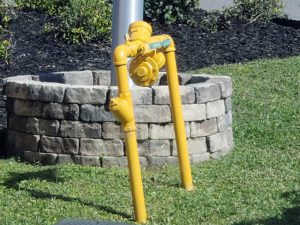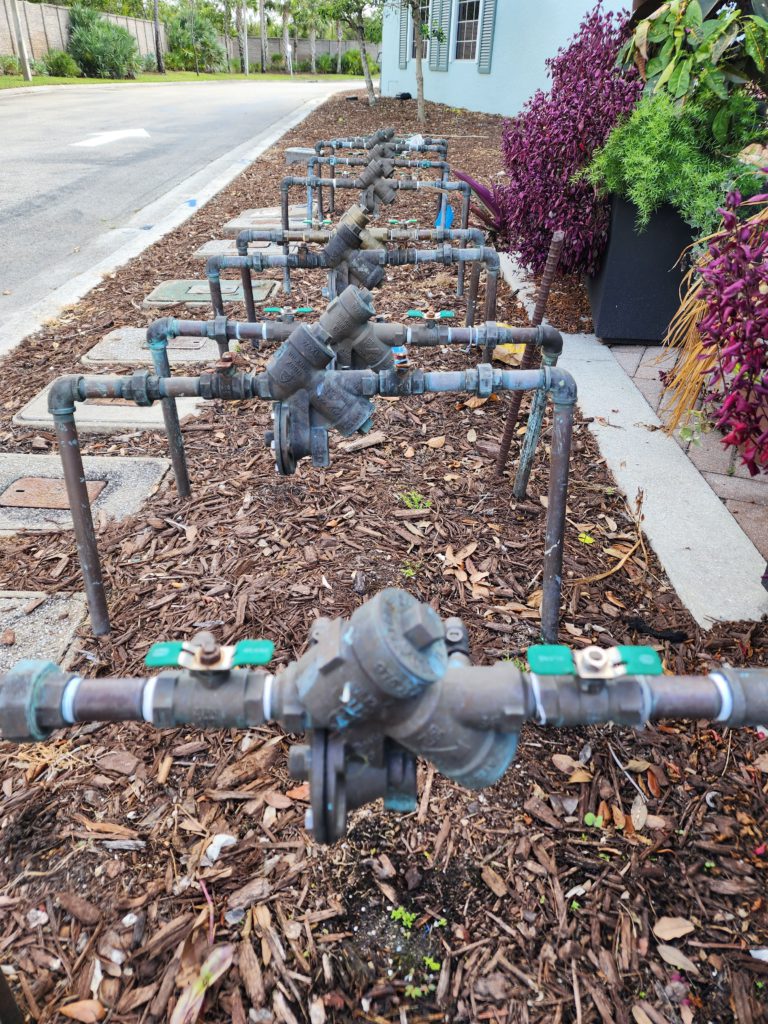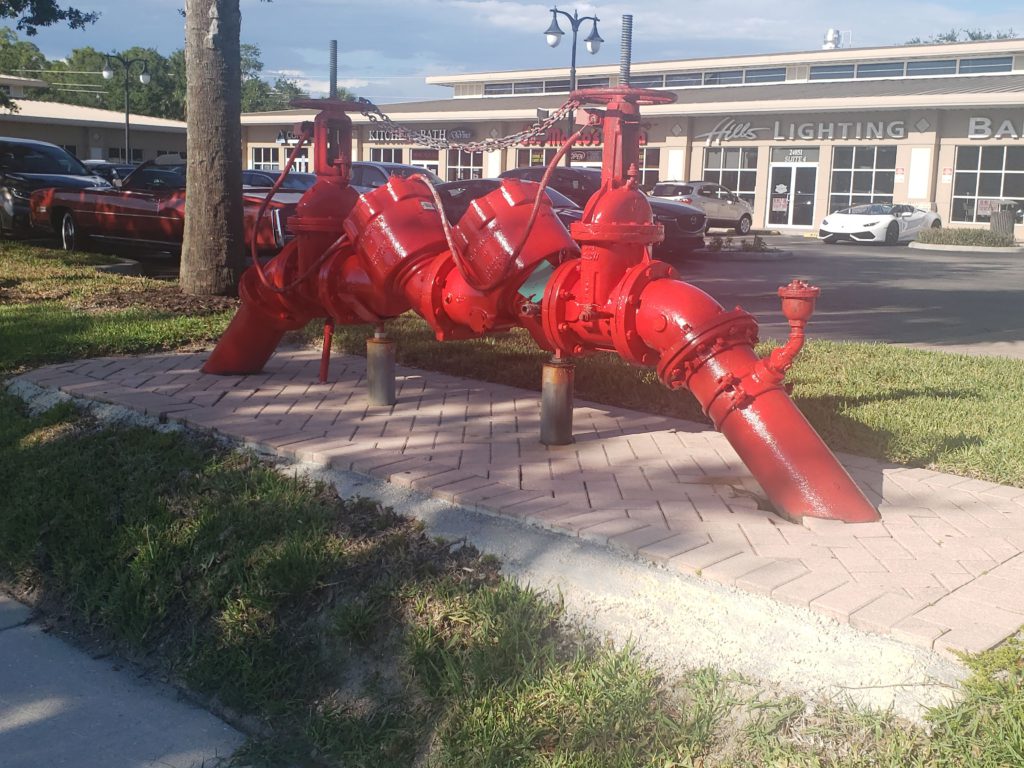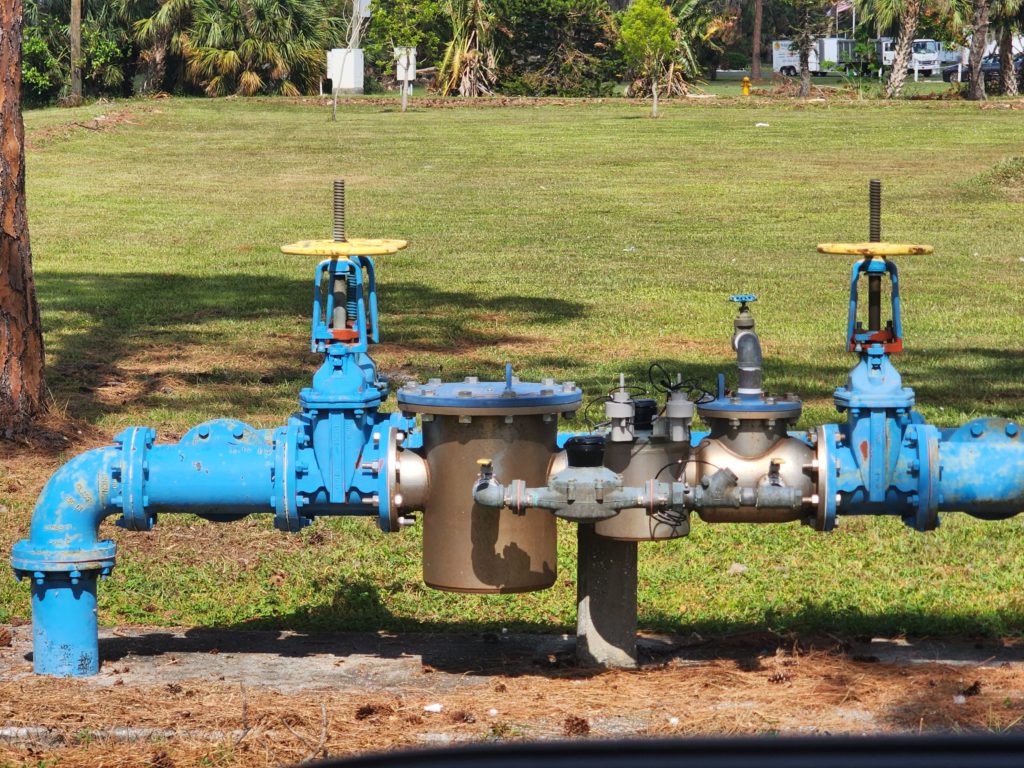California Backflow Testing & Repair

1-888-474-0785
1-888-474-0785
California Backflow Testing, Plumber, Repair
24 Hour Plumber
California Backflow Testing, Repair, Plumbing Service
San Diego County Backflow Testing and Orange County Backflow Testing both have local plumbing services and businesses that do certified backflow testing that may assist you. Backflow testing, backflow repair services, and the installation of new backflow prevention devices for your home or place of business may be areas of competence for each of the local businesses. Backflow happens when pressure fluctuations in your plumbing system induce unintentional movement of water in the opposite direction that it was designed to travel. This is something that may occur in a variety of different types of piped plumbing systems, such as water plumbing for homes and businesses, industrial plumbing systems, fire suppression systems, and irrigation systems. 1-888-474-0785. Espanol Pruebas de Contraflujo 1-888-474-0785
What is backflow?
Backflow is the unintentional movement of water or other fluids in the opposite direction that they were designed to go is referred to as back flow. Backflow may also occur with other types of fluids. Backflow prevention devices are designed to block this flow, so safeguarding not only your home but also the public water supply. These devices fall into one of two categories: those that employ the Reduced Pressure Principle Backflow Preventer (RP) and those that use the Double Check Valve Assembly (DC). Both of these types of backflow preventers are referred to simply as “backflow preventers.” While the RP is employed for high-hazard systems like those that handle poisonous or hazardous fluids, the DC is utilized for low-hazard systems like those that handle irrigation or fire suppression systems. Both types have their own specialized uses and constituents that are unique to them.
 Call 1-888-474-0785
Call 1-888-474-0785
When viewing a backflow preventer from the first-person perspective, you will see a number of different pieces, including check valves, relief valves, air vents, and shutdown valves. In order to avoid backflow, check valves, for example, are designed to let water to flow in only one direction. In contrast, the relief valve will let out excess pressure in the event that the check valves fail, so assuring that water will not flow back into the public water supply.
Replacements Are Required for the Backflow Prevention Devices?
Backflow prevention devices are susceptible to deterioration over time and may need replacement. This is due to the fact that interior elements like seals, springs, and diaphragms are susceptible to wearing down or being damaged over time. Even if your backflow prevention device may have its lifespan extended by routine inspections and maintenance, it is still important to have it replaced at the appropriate intervals to guarantee that it will continue to safeguard your water supply.

Certified Backflow Testing
The method of testing for backflow entails going through a number of procedures to confirm that the backflow prevention device in question is operating correctly. The device will first undergo a visual examination by a trained professional who is certified to do so in order to check for any obvious signs of damage or wear. After that, they will attach a test kit to the device and run tests on it to ensure that the check valves and the relief valves are operating in the appropriate manner. If any problems are found, the professional will either perform the required repairs or suggest that a replacement be purchased. Maintaining the safety of your water supply and adhering to local requirements both require regular backflow testing.
Backflow Testing in San Diego County and Orange County, California
California-Backflow.com is committed to providing residents and businesses in San Diego County and Orange County with backflow testing services of the highest possible quality. All of your backflow testing, repair, and installation requirements may be taken care of by our skilled and certified professionals, who are well-versed in the many types of backflow prevention devices.
County Backflow Regulations
Backflow prevention devices must undergo regular testing in order to comply with the local standards that govern San Diego County and Orange County. It is possible to incur financial fines and other penalties if you do not comply with these requirements. Our staff at California-Backflow.com is able to aid you in remaining compliant by delivering on-time testing services and supporting you in comprehending the criteria that are unique to your property. We can do this for you.
The Importance of Performing Maintenance on a Regular Basis
It is vital to conduct routine maintenance on your backflow prevention device in order to guarantee that it functions at its highest potential and to extend its lifespan. Routine inspections may help discover possible problems before they become more serious concerns that need more extensive solutions. At California-Backflow.com, our highly trained service professionals are able to perform complete maintenance services, which may include cleaning, repairing, and replacing worn or broken components as necessary.

Backflow Testing Due Date
When is backflow testing due date by? Simply give us a call at the following number: 1-888-474-0785 to schedule your backflow testing. Our helpful team will work with you to arrange a time that is convenient for one of our certified experts to visit your home and do the required tests. This appointment will be scheduled as soon as possible. We are aware of the significance of providing prompt service and will make every effort to work around your schedule.
As a local directory, California-Backflow.com takes great satisfaction in providing backflow testing services of the highest possible quality to safeguard both your home and the public water supply in the counties of San Diego and Orange in California. You can put your faith in us to manage all of your backflow prevention requirements since we have extensive industry experience, access to cutting-edge technology, and a commitment to providing exceptional service. To schedule your backflow testing or to discuss any other plumbing problems you may have, please give us a call at the following number: 1-888-474-0785.
San Diego Backflow Testing
In San Diego, maintaining the safety and dependability of the water supply that is provided to your home should be your first concern. In order to protect the standard of water flow in your home or company, backflow testing services are crucial. At California-Backflow.com, we are dedicated to providing the businesses and residents of San Diego with backflow testing services of the highest caliber. Your water supply will continue to be clean and free from contamination even if there is a possibility for backflow concerns since our certified technicians have expertise working with a variety of backflow prevention devices. San Diego County backflow testing may include Bonsall backflow testing, Cardiff By The Sea backflow testing, Carlsbad backflow testing, Del Mar backflow testing, Encinitas backflow testing, Escondido backflow testing, Fallbrook backflow testing, La Jolla backflow testing, Oceanside backflow testing, Poway backflow testing, Rancho Santa Fe backflow testing, San Luis Rey backflow testing, San Marcos backflow testing, Solana Beach backflow testing, Vista CA backflow testing, Valley Center backflow testing, and San Diego Backflow Testing.
San Diego County Backflow Testing
Bonsall Backflow Testing
Cardiff By The Sea Backflow Testing
Carlsbad Backflow Testing
Del Mar Backflow Testing
Encinitas Backflow Testing
Escondido Backflow Testing
Fallbrook Backflow Testing
La Jolla Backflow Testing
Oceanside Backflow Testing
Poway Backflow Testing
Rancho Santa Fe Backflow Testing
San Luis Rey Backflow Testing
San Marcos Backflow Testing
Solana Beach Backflow Testing
Vista Backflow Testing
Valley Center Backflow Testing
San Diego Backflow Testing
Orange County Backflow Testing
For the health and well-being of residents and businesses in Orange County, maintaining a high-quality water supply is crucial. In order to guarantee that the water supply does not get contaminated as a result of any accidents involving backflow, backflow testing services are crucial. California-Backflow.com is committed to providing the communities located in Orange County with backflow testing services of the highest possible quality. Because our trained experts have years of experience dealing with a wide range of certified backflow prevention devices, we can guarantee that the water supply on your property will always be free of contaminants and completely risk-free.
Orange County Backflow Testing
Aliso Viejo Backflow Testing
Anaheim Backflow Testing
Atwood Backflow Testing
Brea Backflow Testing
Buena Park Backflow Testing
Capistrano Beach Backflow Testing
Corona Del Mar Backflow Testing
Costa Mesa Backflow Testing
Dana Point Backflow Testing
East Irvine Backflow Testing
El Toro Backflow Testing
Foothill Ranch Backflow Testing
Fountain Valley Backflow Testing
Fullerton Backflow Testing
Huntington Beach Backflow Testing
Irvine Backflow Testing
Ladera Ranch Backflow Testing
Laguna Beach Backflow Testing
Laguna Hills Backflow Testing
Laguna Niguel Backflow Testing
Lake Forest Backflow Testing
Mission Viejo Backflow Testing
Newport Beach Backflow Testing
Newport Coast Backflow Testing
Orange Backflow Testing
Placentia Backflow Testing
Rancho Santa Margarita Backflow Testing
San Clemente Backflow Testing
San Juan Capistrano Backflow Testing
Santa Ana Backflow Testing
Sunset Beach Backflow Testing
Surfside Backflow Testing
Trabuco Canyon Backflow Testing
Tustin Backflow Testing
Villa Park Backflow Testing
Yorba Linda Backflow Testing
A backflow preventer can be added to various plumbing items, including:
- Irrigation systems
- Fire sprinkler systems
- HVAC systems
- Boilers
- Water softeners
- Swimming pools and spas
- Chemical feed systems
- Cooling towers
- Any plumbing where there is a potential for backflow pressure.

The Importance of Keeping Your System Up-to-Date, Especially When It Comes to Backflow Replacement
The safety of your water supply may be jeopardized if backflow prevention devices are allowed to deteriorate or fail over time. In circumstances like these, backflow prevention device replacement becomes necessary to ensure that your system continues to function properly. If your property’s backflow preventer is broken or otherwise out of date, you should consider replacing it with a brand-new, high-quality one. You can simply locate certified experts in your area who have the experience and understanding to recognize the need for backflow replacement and carry out the required work with precision and care by using a reputable directory such as California-Backflow.com. This will allow you to find certified specialists quickly and effortlessly. You may rest easy knowing that your water supply will continue to be free from contamination for many years to come if you make the investment in a backflow replacement.
California-Backflow.com is aware of the need of providing prompt replacement services for backflow prevention devices. Our database includes expert service providers that are committed to providing timely and efficient backflow replacements that comply with all local legislation and norms. These service providers may be found here. They are familiar with a wide range of backflow prevention devices, which enables them to provide the one that is most suited to meeting your individual requirements. You can depend on the service providers listed in our directory to conduct your backflow replacement with the greatest expertise because of our dedication to connecting you with reputable and experienced specialists. Use California-Backflow.com to discover a local service provider or contact us at 1-888-474-0785 for help in locating the proper firm for your backflow replacement requirements. Do not wait until a backflow problem threatens the safety of your water supply; instead, take preventative measures as soon as possible.
Backflow prevention valves for common plumbing fixtures that require testing in California include:
To protect the potable water supply from contaminants like fertilizers and pesticides, irrigation systems like lawn sprinklers often require backflow prevention.
Back flow prevention devices for fire sprinkler systems are required to prevent tainted water from entering the potable supply systems.
Backflow preventers are required to be put in swimming pools and spas to prevent harmful chemicals and other contaminants from entering the public water supply.
Backflow preventers are commonly necessary in water heating systems to prevent the contamination of the potable water supply by wastewater.
Backflow prevention devices in boiler systems assist prevent corrosion and chemical contamination of the potable water supply.
In water softening systems, backflow prevention devices are required to stop brine and other contaminants from flowing back into the potable water supply.
To protect the water supply from contamination by chemicals and biological agents employed in the cooling process, cooling towers require backflow preventer systems.
Hose bibs: To prevent contamination of the potable water supply, outside hose connections like garden hoses and pressure washers should be fitted with backflow prevention devices.
To avoid having chemicals from, say, a water treatment facility or an industrial operation seep back into the water supply, backflow prevention measures must be applied in chemical feed systems.
Commercial kitchen equipment: To protect the potable water supply from contamination, commercial dishwashers, ice makers, and other kitchen equipment that connects to the backflow prevention may require backflow prevention devices.
California Backflow Testing

1-888-474-0785
1-888-474-0785
California Backflow Testing, Plumber, Repair
24 Hour Plumber
Irrigation systems for the lawn
Fire sprinkler systems
Boilers for both commercial and domestic use
Air conditioning that is cooled by water systems
Spas and swimming pools are available.
Water distribution networks for businesses and households
Industrial piping systems
Healthcare establishments such as hospitals and other
Establishments devoted to the provision of dining and drinking options
Washes for automobiles
Plants for the manufacture of chemicals and other products
Refineries for both petroleum and gas
Water systems for municipalities
Irrigation systems for agricultural use
California Backflow Prevention, Clean Water, and Water Testing
Backflow testing in California (San Diego County and Orange County:) In order to prevent the unintended reversal of water flow, which may lead to contamination, backflow prevention is an essential component of maintaining water quality and safety across a wide range of applications. Backflow preventers are used in lawn irrigation systems to protect drinking water from being tainted with chemicals such as fertilizers and pesticides. To guarantee that potentially contaminated water does not enter the supply of potable water, fire sprinkler systems need backflow prevention. In order to protect against possible contamination from chemicals and corrosion inhibitors, commercial and residential boilers, as well as water-cooled air conditioning systems, need backflow preventers. To prevent chemically treated water from entering the primary water supply, swimming pools and spas use backflow prevention.
The prevention of backflow into potable water systems is necessary in both commercial and residential water supply lines. This prevents contaminants from getting into the drinking water supply. To protect against the risk of contamination from chemicals and biohazards, backflow preventers are required for industrial pipe systems, hospitals, and medical institutions. To uphold food safety regulations and prevent the spread of water-borne infections, restaurants and other food service facilities need backflow prevention. To protect public water systems from potentially harmful products, car washes, chemical factories, industrial facilities, and petroleum and gas refineries all use backflow preventers. Backflow prevention devices are essential to the operation of municipal water systems because they ensure that water quality is maintained. Last but not least, agricultural irrigation systems need backflow prevention to protect water sources from contamination by pesticides, chemicals, and other agricultural chemicals.
Maintaining public health and protecting the environment both depend heavily on backflow prevention. To guarantee that backflow prevention devices are doing their job effectively, it is necessary to deploy them correctly and perform routine maintenance on them. As correct operation is crucial to prevent possible dangers, certified specialists must check, test, and repair these equipment.
Backflow prevention is important at educational institutions to preserve the safety of drinking water for students and staff, protecting them from possible toxins discovered in laboratory facilities or maintenance areas. Backflow prevention is necessary in educational institutions. In addition, backflow preventers are an absolute need in pharmaceutical production facilities because they eliminate the risk of contamination caused by chemicals, solvents, and other potentially hazardous substances.
In addition, it is of the utmost importance to give backflow prevention some thought in recreational facilities such as golf courses and parks, where there is the possibility of contamination caused by pesticides and fertilizers. In addition, backflow preventers assist protect water supplies in zoos and aquariums, which have their own distinct water treatment procedures and waste management systems that might pose risks to public water systems.
In a nutshell, the prevention of backflow is an essential part of the management of water systems in a wide variety of industries and applications. Communities and companies may protect public health and the environment by establishing and maintaining appropriate backflow prevention measures.
The importance of backflow prevention in ensuring that water systems continue to be safe and efficient grows as our dependence on them develops. It is vital to encourage awareness, education, and training among industry experts and the general public in order to further strengthen efforts to prevent backflow. This will help ensure that the prevention measures are as effective as possible. Communities and individuals may contribute to the general safety of their communities by knowing the dangers involved with backflow and the appropriate actions to prevent it.
Regulations, guidelines, and standards for the prevention of backflow are established and enforced by governments and other regulatory agencies. This is a very important function. These bodies should cooperate closely with other industry players to develop best practices and recommendations, so ensuring a complete and successful approach to backflow prevention across all industries.
Both the efficiency of these systems and the simplicity with which they may be put into action can be significantly boosted by making use of newly developed technologies and innovations in backflow prevention devices. The development of novel materials, designs, and processes via research and development may lead to more efficient and affordable backflow prevention technologies, allowing for their wider acceptance and accessibility.
In conclusion, the prevention of backflow is both a continuing effort that is crucial in maintaining the safety and quality of our water systems, and it is an ongoing process. We will be able to significantly improve our efforts to protect our water resources, public health, and the environment for future generations if we continue to invest in education, regulation, and innovation.
The prevention of backflow is a crucial component of water management that calls for unceasing awareness as well as the ability to adjust to emerging challenges. As a result of climate change and rising water shortages, water systems are becoming more susceptible to shifts in supply and demand, which may make the risks associated with backflow even more severe. Effective techniques for backflow prevention must take into consideration these shifting circumstances, ensuring that water systems can continue to be robust and capable of supplying clean, safe water to communities even in the face of hardship.
The prevention of backflow may be further improved with the assistance of international cooperation, as well as the collaboration of the public and commercial sectors. It is possible for countries and organizations to work together to meet the global problem of maintaining water quality and safety if they share their knowledge, resources, and best practices with one another. This collaboration has the potential to stimulate the development of new technologies and novel solutions that can be applied across a variety of geographies and circumstances, so allowing for a more robust and unified approach to backflow prevention.
Beyond protecting human health and safety, the importance of backflow prevention also includes protecting ecological systems and natural habitats. Maintaining the health of rivers, lakes, and oceans—which in turn sustain a broad range of flora and fauna—requires safeguarding water sources against contamination. When we make the prevention of backflow a top priority, we not only protect the communities in which we live, but we also contribute to the preservation and long-term viability of the natural environment.
In the end, the prevention of backflow is a crucial and continuing obligation that requires our attention, resources, and combined efforts. We can make major achievements in protecting our water systems, ensuring the well-being of both human populations and the environment for decades to come, via ongoing study, innovation, education, and collaboration.
Backflow prevention is one of the most important aspects of efficient water management practices as the globe becomes more linked. The increase of urbanization presents towns and communities with new challenges when it comes to maintaining their water infrastructure, and backflow prevention is crucial in resolving these challenges. We can better handle expanding populations while maintaining public health and protecting the environment if we invest in the modernisation and extension of water systems.
Emerging technologies such as the Internet of Things (IoT) and smart water management systems have the potential to improve backflow prevention efforts by offering data-driven insights and real-time monitoring. These advancements enable more efficient identification of possible backflow issues, allowing for preventative steps to be taken and speedier reaction times. This, in turn, serves to guarantee the dependability of water systems by reducing the likelihood of contamination and reducing the associated risk.
Participation from the public and the community at large is another vital element of a successful backflow prevention plan. Individuals may be empowered to play an active role in protecting their local water systems by encouraging appropriate water usage, reporting suspected backflow events, and engaging in educational initiatives. We may all contribute to the preservation of our most priceless resource by cultivating a feeling of shared responsibility and stewardship amongst ourselves.
The prevention of backflow is a complex and ever-evolving problem that calls for the concerted efforts of individuals, communities, industries, and governments working together. We are able to develop and execute effective backflow prevention measures that will protect our water systems and provide a sustainable future for everyone if we embrace new technologies, stimulate collaboration, and empower public engagement. These are the three pillars of the sustainable future initiative.